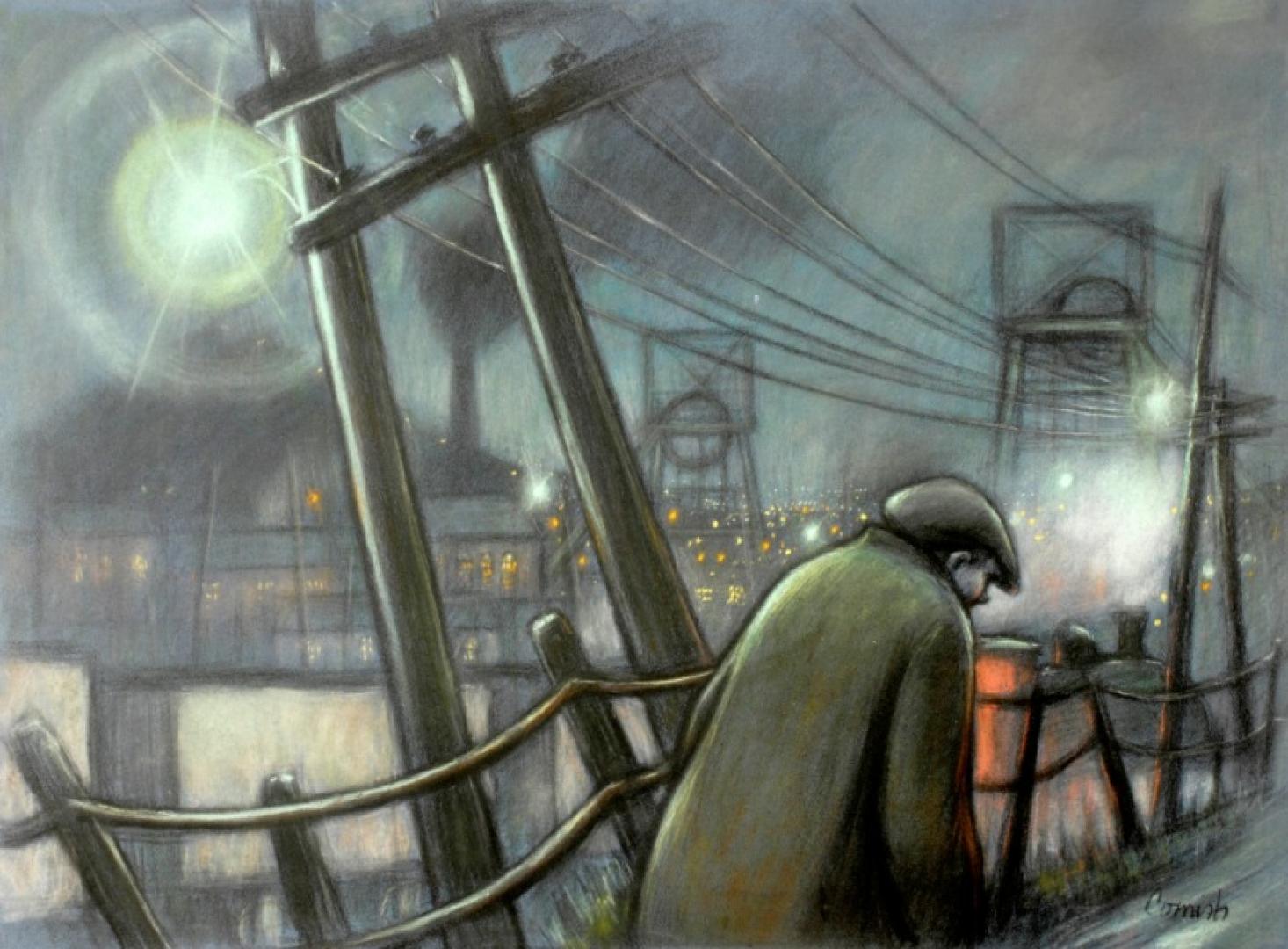THE Bowes Museum is honoured to be holding the first major retrospective by one of the most loved artists from the North East .
Norman Cornish: The Definitive Collection will open almost 100 years to the day after the artist’s birth in Spennymoor.
Visitors will be able to see more than 60 works including, pastels, charcoals and oil paintings for public and private collections, some of which are previously unseen.
Cornish’s work has an enduring popularity and leaves a wonderful legacy – an immediate and accessible social documentary of a bygone era.
Aged 14, he was obliged to begin life as a miner – a career which was to span four decades. As his father and grandfather had both been miners before him, there was an inevitability Cornish would follow in their footsteps.
On his first day at the colliery, he recalled: “The men climbed the steep steps of the gantry; their swaying oil lamps looked like fireflies. Then I saw a mass of railings, steps, girders and wires. I thought it looked like a great, steel spider’s web.”
Around that time, his artistic ability found fulfilment when he joined the Sketching Club at the Spennymoor Settlement. The warden, Bill Farrell, advised the young boy to “paint what you know” . His inspiration did come from the world he knew; his own “slice of life” .
His depictions of miners reflect the harsh working environment – the claustrophobic space of the seams where men and pit ponies toiled. He dubbed them “industrial gladiators” .
A small town in the Durham Coalfield may seem an unlikely source of inspiration. But for the artist, this was not a constraint, his work reflects the core features of mining communities – the pit, the pub and the sociability of street life, with its chip van horse-drawn carts, miners at leisure, women in wrap-around pinnies gossiping and children playing.
Cornish painted many versions of the pit road. It was a road he walked for some 30 years or more. With telegraph poles looming like crucifixes, characters struggle along reminiscent of a kind of Calvary scene. He was a chronicler of everyday life, recording the social environment and industrial landscape in which he lived and worked.
“I made drawings of pub interiors in days past because I was fascinated by the men standing at the bar, drinking and talking or sitting playing dominoes. I was attracted by the wonderful shapes they made in their various attitudes,” he once said.
Alongside these mining community chronicles, the retrospective will include some of his commissions which ranged from portraits and industrial scenes to a trip to Paris for Tyne Tees Television where he was encouraged by the producer to critically appraise the art of the French capital through the eyes of the northern artist.
Some of his industrial commissions included the Port of Tyne Authority’s request for him to capture in oils their “Roll-on, Roll-off” facility at North Shields and The River Pageant, commemorating 900 years of Newcastle’s history, as well as British Oxygen’s commission to depict industrial scenes at its Birtley site in County Durham. The first two of these will be seen by the public for the first time.
Dr Howard Coutts, from The Bowes Museum, said: “We are truly honoured to be holding this first major retrospective of works by Norman Cornish.”
Norman Cornish: The Definitive Collection is on between November 16 and 23.







